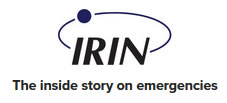
Thursday, December 05, 2013
advertisements
Thousands of people have been left homeless following continued flooding in parts of Somalia’s Middle Shabelle region over the past couple of months, with large tracts of farmland being inundated, raising fears of livelihood losses.The Shabelle River floods started in late August in and around the Middle Shabelle town of Jowhar, according to an update by the UN Office for the Coordination of Humanitarian Affairs (OCHA), due to rains in the Ethiopian highlands. Subsequent flooding has since left an estimated 11,000 households - about 66,000 people, spread over 33 villages - affected by localized flooding in Middle Shabelle’s Jowhar District, according to a 4 December OCHA update.
Some 8,000 hectares of land have also been inundated in the districts of Balcad and Jowhar.
Farmland affected, access cut-off
“My farm, where I grew vegetables and fruits, has been completely wiped out, and I have lost an estimated fortune of US$12,000,” Abdullahi Mohamed Hussein, a resident of Jowhar, told IRIN by telephone. Jowhar is located about 90km north of Mogadishu.
Abdi Moyko, a father of eight, told IRIN that he had lost his full crop of sesame, beans and maize. “We used to consume part of my produce and sell the remaining produce, but as a result of the floods, my family is hungry and my children are going to the feeding centres for a plate of rice. I feel sad, and I do not know what to do,” he said.
The Middle Shabelle region, through which the permanent River Shabelle runs, is part of Somalia’s bread basket.
The flood waters have also cut off road access in some parts.
“Residents have to use small makeshift boats for 6km, then they are dropped in waist-deep water, from where they wade for about the same distance to reach a temporary bus stop outside the city,” Abdikarin Alos, a local journalist, told IRIN.
There are also concerns over the outbreak of diseases.
Jowhar resident Abdullahi Hassan told IRIN that malaria has been a major problem due to the floods, with cases of diarrhoea reported amid fears of malnutrition. “There is a need to prevent the situation from developing into a major crisis,” he said.
Humanitarian response
Humanitarian response has been ramped up despite a lack of reliable data and poor access to some eight villages, due to either flooding or insecurity, according to OCHA. Clan fighting in early November in Middle Shabelle had displaced some 2,296 households from 10 villages, according to the African Union Mission in Somalia (AMISOM).
Shelter support has been provided to about 38,900 people, with 60,000 people also being reached with emergency medical services through static and mobile health clinics. Other assistance is being provided in food and nutritional as well as in hygiene support.
According to Abdirahman Hosh Jibril, a member of the Somali parliament, the government should put in place a national plan to avert a repetition of the flood disaster: “The root causes are that there are no dams, and irrigation canals have been clogged up by sand, so we need to find a solution for this.”
Jibril added that there are plans to hold fundraising campaigns for those affected by the flooding, with the help of musicians. He called on the Somali government as well as the international community and other donors to assist the people in the Middle Shabelle region.
“People are going hungry as the city remains inaccessible and foodstuffs [prices] are going up,” he said.
Flooding in the Middle Shabelle is ongoing even as the northeastern autonomous region of Puntland struggles to recover from a devastating tropical cyclone that struck in November, killing over 100 people and thousands of head of livestock.
An estimated 35,000 people in Puntland were affected by the cyclone and are at risk of destitution and hunger, according to a statement from the international Organization for Migration.